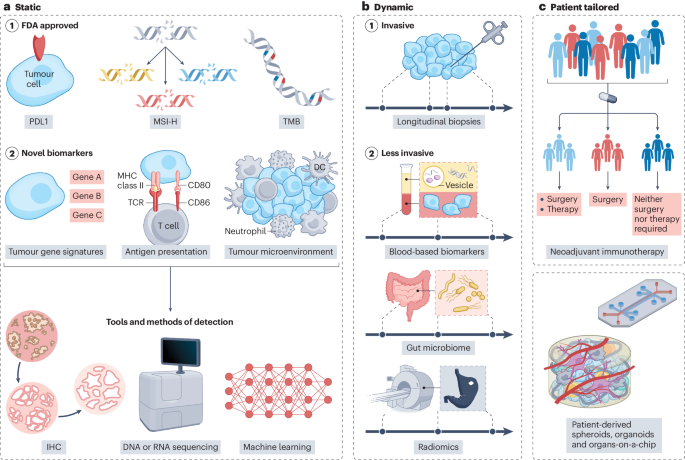Delving into the world of drug classifications can be intricate and confounding, especially when it comes to Schedule 1 substances. These substances are classified as Schedule 1 by the Drug Enforcement Administration (DEA) due to their high potential for abuse and lack of accepted medical use. But what exactly does it mean for a drug to be labeled as Schedule 1? In this blog, we will unravel the complexities surrounding Schedule 1 drugs, exploring why they are considered so dangerous, the implications of this classification on research and medical use, and the controversies that surround it. Join us as we peel back the layers and uncover the truth behind Schedule 1 drugs.
Overview of Schedule 1 Drugs
Schedule 1 drugs are substances that are considered to have a high potential for abuse and no accepted medical use. These drugs are classified as Schedule 1 by the Drug Enforcement Administration (DEA) in the United States. Understanding what is a schedule 1 drug is essential in comprehending the strict regulations and penalties associated with their possession, distribution, and use.
The Criteria for Schedule 1 Classification
Schedule 1 drugs meet specific criteria that include the lack of accepted safety for use under medical supervision, a high potential for abuse, and no recognized medical benefits. Substances like heroin, LSD, and ecstasy fall under this category, making them strictly regulated.
It is important to understand that the classification of drugs into schedules is based on a thorough analysis of their properties, effects, and risks.
Impact of Schedule 1 Classification
The scheduling of drugs affects the penalties for their possession and distribution. Being caught with a Schedule 1 substance can lead to severe legal consequences, including imprisonment and hefty fines. Additionally, research on Schedule 1 drugs is restricted, hindering scientific advancements and potential medical breakthroughs.
- Education: Public awareness about the dangers of Schedule 1 drugs is crucial in preventing abuse and addiction.
- Legislation: Ongoing debates focus on the reclassification of certain substances to facilitate research and medical use.

History of Schedule 1 Classification
Schedule 1 drugs are substances that are defined as having no accepted medical use and a high potential for abuse. The classification of drugs into different schedules, including Schedule 1, is overseen by the Drug Enforcement Administration (DEA) in the United States. The history of Schedule 1 classification dates back to the enactment of the Controlled Substances Act (CSA) in 1970.
Origins of Schedule 1 Classification
The CSA was signed into law by President Richard Nixon as part of the government’s response to the rising drug abuse crisis in the country. The Act created a system for regulating controlled substances and placed them into different schedules based on their potential for abuse and medical utility.
Substances categorized as Schedule 1 are considered to be the most dangerous and highly regulated. This classification includes drugs like heroin, LSD, and marijuana, which are deemed to have a high potential for abuse and no accepted medical use.
Challenges and Controversies
Over the years, the Schedule 1 classification has faced criticism and controversy, particularly regarding the inclusion of certain substances. Advocates for drug policy reform argue that some Schedule 1 drugs, such as marijuana, have demonstrated medical benefits and should be reclassified to allow for further research and access for patients.
- This ongoing debate has sparked legislative efforts at both the state and federal levels to reconsider the scheduling of various substances.
Examples of Schedule 1 Substances
In understanding what is a schedule 1 drug, it is crucial to know some examples of substances classified under this category. Schedule 1 drugs are considered to have a high potential for abuse and no accepted medical use. Some examples of schedule 1 substances include:
Marijuana
Marijuana, also known as cannabis, is a well-known schedule 1 substance. It is widely used for recreational purposes but is prohibited under federal law in most countries.
Heroin
Heroin is a powerful and illegal opioid that falls under schedule 1 classification. It is highly addictive and poses serious health risks.
LSD
LSD, or lysergic acid diethylamide, is a hallucinogenic drug included in schedule 1. It can cause profound distortions in perception and hallucinations.
Ecstasy
Ecstasy, also known as MDMA, is a synthetic drug that is classified as a schedule 1 substance. It is popular in the party scene but can have dangerous effects on the brain.
Effects and Dangers of Schedule 1 Drugs
Schedule 1 drugs, categorized as substances with a high potential for abuse and no accepted medical use, pose severe risks to individuals who misuse them. The effects of these drugs can be profound, ranging from impaired cognitive function to physical harm and addiction.
Psychological Impact
Using what is a schedule 1 drug can lead to altered perception, mood swings, hallucinations, and paranoia, impacting an individual’s mental well-being.
Physical Dangers
The consumption of Schedule 1 drugs may result in a range of physical health issues, including respiratory problems, cardiovascular complications, and risk of overdose.
Repeated use can also lead to tolerance, requiring higher doses to achieve the desired effect, increasing the risk of adverse reactions.
Legal Implications and Penalties
Understanding the legal implications and penalties associated with Schedule 1 drugs is crucial. These substances are classified as having a high potential for abuse and no accepted medical use, making their possession, distribution, and use illegal under federal law.
Federal Regulations
Under federal law, what is a schedule 1 drug is clearly defined. Violations related to Schedule 1 substances can result in severe legal consequences, including hefty fines and lengthy prison sentences.
Individuals caught possessing, selling, or manufacturing Schedule 1 drugs may face prosecution under the Controlled Substances Act.
State Laws and Penalties
While federal law governs the classification of drugs, states may impose additional penalties for Schedule 1 drug offenses. It’s essential to be aware of both federal and state laws to understand the full scope of potential consequences.
- State penalties for Schedule 1 drug offenses may vary, with some states imposing stricter punishments than others.
- Individuals convicted of Schedule 1 drug offenses may face incarceration, probation, fines, and mandatory drug treatment programs.

Medical Benefits and Research Concerns
As of the latest research data, understanding the medical benefits and research concerns surrounding Schedule 1 drugs, particularly cannabis, remains vital. What is a Schedule 1 drug is a question often asked in the context of the restrictions placed on substances like cannabis.
Medical Benefits of Schedule 1 Drugs
Schedule 1 drugs have shown promise in various medical applications. For instance, studies conducted in 2021 suggest that cannabis may offer relief for chronic pain, epilepsy, and anxiety disorders.
Furthermore, research indicates that substances classified as Schedule 1 might have neuroprotective properties, which could aid in the treatment of neurodegenerative diseases like Alzheimer’s.
Research Concerns and Limitations
Despite the potential benefits, researchers face significant challenges in studying Schedule 1 drugs due to regulatory hurdles and stigmas associated with these substances.
- Access to research-grade Schedule 1 drugs is restricted, hindering comprehensive studies into their therapeutic potential.
- Additionally, the Schedule 1 classification impedes funding opportunities, limiting the scope and depth of research.
Frequently Asked Questions
- What is a Schedule 1 Drug?
- A Schedule 1 Drug is a classification from the Controlled Substances Act, indicating that the drug has a high potential for abuse and no accepted medical use.
- What are examples of Schedule 1 Drugs?
- Examples of Schedule 1 Drugs include heroin, LSD, ecstasy, and marijuana.
- Is marijuana still classified as a Schedule 1 Drug?
- Yes, marijuana is still classified as a Schedule 1 Drug at the federal level in the United States.
- Why are Schedule 1 Drugs considered dangerous?
- Schedule 1 Drugs are considered dangerous due to their high potential for abuse and lack of accepted medical use, which can lead to severe physical and psychological harm.
- Are there any potential benefits to reclassifying Schedule 1 Drugs?
- Reclassifying certain Schedule 1 Drugs could allow for further research into their potential medical benefits and potentially lead to improved treatment options for certain conditions.
Unveiling the Truth: A Closer Look at Schedule 1 Drugs
After delving into the intricacies of what Schedule 1 drugs are, it’s clear that these substances are deemed highly dangerous and lacking accepted medical use. The classification of drugs under this schedule highlights the need for stringent regulations and control due to their potential for abuse and severe health consequences. By understanding the criteria for Schedule 1 classification and the implications it carries, individuals can comprehend the gravity of the situation surrounding these substances. It is crucial for both policymakers and the general public to be aware of the implications of Schedule 1 drugs to promote informed decision-making and prioritize public safety.
In conclusion, the classification of drugs into different schedules plays a pivotal role in shaping drug policies and regulations. As we navigate the complex landscape of drug classification, staying informed and advocating for evidence-based approaches is essential in addressing the challenges posed by substances categorized as Schedule 1.
